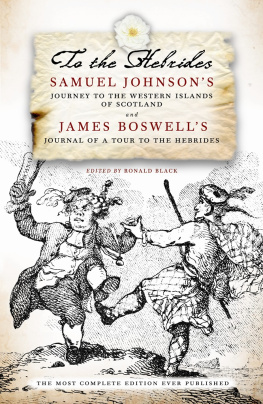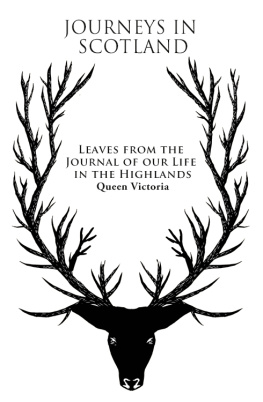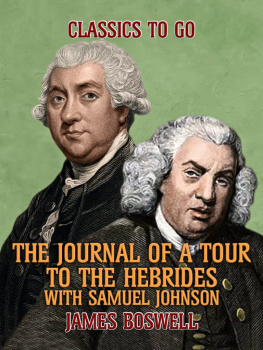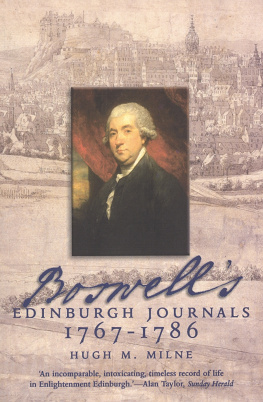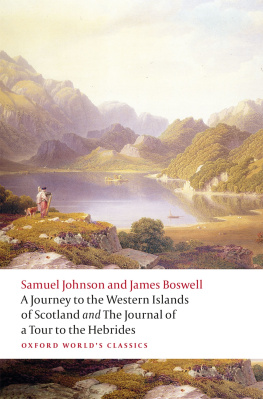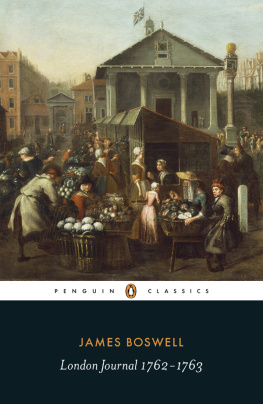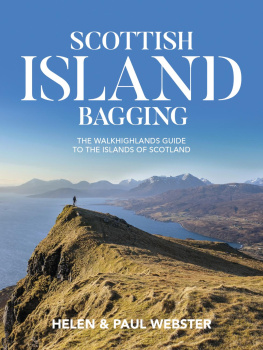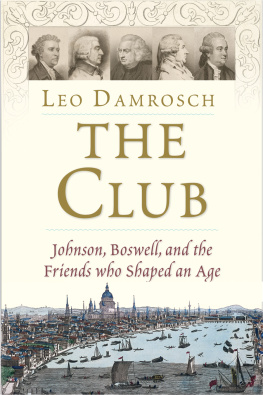To the Hebrides
Samuel Johnson, a booksellers son from Lichfield, achieved fame as a poet and moral essayist before completing his most famous work, The Dictionary of the English Language.James Boswell had known him for exactly ten years when they set out together for the Hebrides in 1773. Son of a Scottish judge and himself a lawyer, Boswell is celebrated as much for the disarming honesty of his diaries as for his great biography of Johnson.
Formerly a lecturer in Celtic in the universities of Glasgow and Edinburgh, Ronald Black is Gaelic Editor of The Scotsman. As well as various anthologies and studies of eighteenth- and twentieth-century Gaelic verse, he has published The Gaelic Otherworld, a new edition of the folklore collections of the Rev. John Gregorson Campbell of Tiree.

This eBook edition published in 2012 by
Birlinn Limited
West Newington House
10 Newington Road
Edinburgh
EH9 1QS
www.birlinn.co.uk
Notes and maps copyright Ronald Black 2007, 2011
All rights reserved. No part of this publication may be reproduced, stored or transmitted in any form without the express written permission of the publisher.
ISBN: 978-1-78027-031-9
eBook ISBN: 978-0-85790-516-1
British Library Cataloguing-in-Publication Data
A catalogue record for this book is available from the British Library
Maps
Preface
Samuel Johnson and James Boswell toured Scotland in 1773. Their books about the trip, first published in 1775 and 1785 respectively, are monuments of English literature and of travel writing, but they also stand in line with Kirk, Martin, Burt, Pococke, Pennant, Ramsay and John Lane Buchanan as classics of Highland ethnography, the fountainhead of writings in English about the lives, traditions and beliefs of the Gaelic-speaking people of Scotland. Johnsons book, like Martins and others, has an ethnographic core (pp. 178210 below) in which travelogue is laid aside in favour of general observations on the peoples way of life.
Johnson was an Englishman who lived from 1709 to 1784. Boswell was a Lowland Scot who lived from 1740 to 1795. Beyond that there is no need to introduce our two travellers. At pp. 2022 and 39 Boswell does it for us, and he was so satisfied with his description of Johnson that he used it again in his Life of Samuel Johnson, LL.D. (1791), which is rightly regarded as the best biography in the English language.
To the Hebrides looks different from any previous edition of the Journey or the Tour. But that is what it is a new edition of these two classics. It is all here, but organised in three new ways.
Firstly, Johnsons subtitles, like Fall of Fiers and Lough Ness, have been dispensed with; they were unhelpful anyway. Other than this, his text is as published in 1775.
Secondly, instead of presenting the whole of Johnson followed by the whole of Boswell, we have divided the material into thirteen chapters and a conclusion, thus bringing together what the two men have to say about each of the thirteen legs of the journey and highlighting their differing perspectives. This throws up intriguing differences on matters of detail the circumstances of their arrival in Ulva, for example. Our travellers were of an age to be grandfather and grandson, and it shows.
Thirdly, thanks to the discovery of Boswells original journal at Malahide in 1930, Frederick Pottle and Charles Bennett were able to publish Boswells Journal of a Tour to the Hebrides (1936), which contained an enormous amount of previously unknown material of all kinds. This book (here referred to as the Journal as opposed to the Tour) was so successful that Pottle produced an expanded edition in 1963 containing corrections and additions to the text and a splendid Topographical Supplement the intelligent tourists dream. Until now, the Journal has never been printed between the same covers as Johnsons Journey.
In refocusing Johnsons and Boswells books on the Hebrides, Hugh Andrew of Birlinn felt that a composite text of the Tour and the Journal was required. Gordon Turnbull of Yale University (the owners of the manuscript) readily agreed, pointing out that this very idea had been prefigured by Pottle, who wrote in 1963 of the respective merits of the Tour and the Journal:
Careful students of Boswell have found unique values in each version, and would probably prefer to either a text made by selecting at will from manuscript journal and printed book. Those who on the whole prefer the book would certainly like to restore from the manuscript a good many passages that Boswell in printing struck out merely because they transgressed his own very liberal standards of prudence and decorum.
The bedrock for our Boswell text is the journal as edited by Pottle and Bennett, including Pottles corrections and additions. That is what I mean in my notes where I refer to the journal. Where the Tour adds anything of substance, it too is incorporated. This was done by Pottle and Bennett in any case wherever the manuscript was deficient. I have modernised the orthography of these additions in line with the conventions established by Pottle and Bennett. I have also paragraphed Boswells text afresh to aid readability. Where the Tour contains information which adds something to our knowledge or understanding but which would disturb the flow of the text, it is given in the endnotes.
Johnson, striving for forthrightness, wrote no footnotes, but Boswell added many to the Tour. These will be found here in the endnotes, clearly marked, as will translations of the Latin texts which have kindly been made for us by Mr Norman MacLeod.
In the course of 230 years the Journey and Tour have reappeared frequently in two different formats. I would call them landmark and essay editions. By an essay edition I mean a redaction of one or both of the texts prefaced by an introductory essay; all such editions are of great value as the response of an individual to a classic work. The landmark editions have added materially to our knowledge in points of detail, and to them my debt is enormous. I have already mentioned Pottle and Bennetts; a century earlier there appeared Crokers 1831 edition of the Life, which included the Tour, annotated by Sir Walter Scott. It went through so many mutations that I have felt it best to refer to it in the endnotes by day rather than page. Then there was Robert Carrutherss edition of the Tour (1852). Though not a Gaelic speaker, Carruthers was editor of The Inverness Courier, and this provided him with a rich store of Highland insight and anecdote. In 1887 Crokers combined edition of the Life and Tour was succeeded by George Birkbeck Hills; this was revised and further enlarged by L. F. Powell in 1934 and 1964. The result is an indispensible work in six volumes, one of which the fifth consists of Boswells Tour and Johnsons journal of a visit to Wales in 1774. Finally there is Fleemans 1985 edition of the Journey, which contains a valuable Chronology and Topography section that expands and updates Pottles topographical supplement.
The principal aim of To the Hebrides is to summarise existing information on the two texts as clearly as possible. However, the Gaelic and Highland perspective inevitably brings fresh insights. There is also serendipity. Earlier this year my old friend Nicholas Maclean-Bristol of Breacachadh Castle in Coll rang me up in delighted mood to tell me that he had just acquired a good many of the documents described by Boswell at pp. 32632. They had been lost since 1897 but turned up last year in South Africa. Clearly this is a footnote to
Next page
